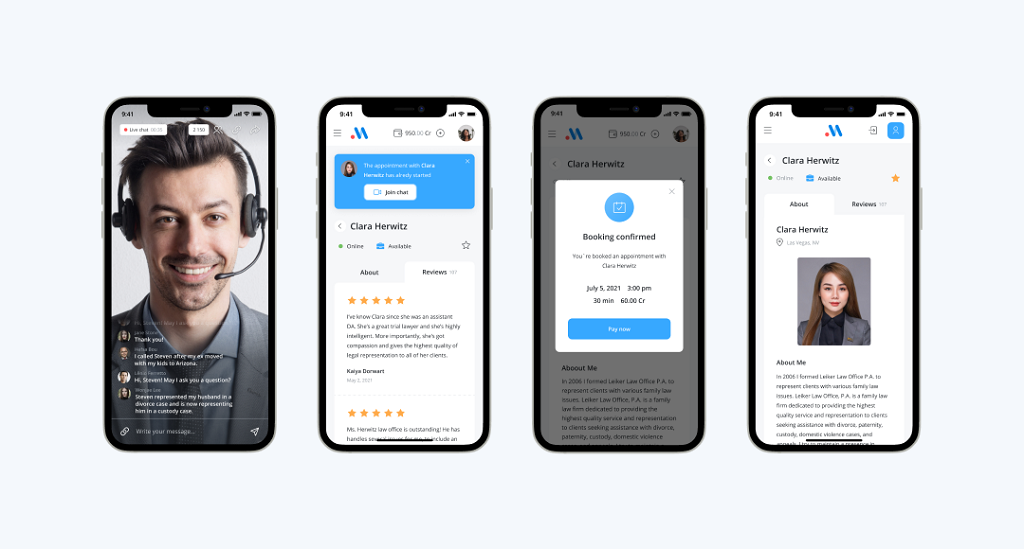The online coaching market is estimated at $7.3 billion in 2026 and is expected to surge to nearly $26 billion by 2032, making it one of the fastest-growing sectors in the digital economy. People now turn to digital coaches for everything: fitness plans, business growth, career changes, language learning, even adult guidance.
If you’ve been thinking about how to start an online coaching business, the conditions are finally lined up. Remote work made video calls second nature. Payment systems are simple enough that clients from any country can subscribe in minutes. And audiences are more willing than ever to invest in expertise that feels personal.
In this article, we’ll map out the essentials: how to choose a niche, set up the business side, build a digital presence, deliver value online, and scale when the first clients come in. By the end, you’ll know what it takes to launch in 2026.
Why Coaching Thrives in 2026

Look around and it’s clear: people are spending more money on guidance than ever. Market research puts coaching in the multi-billion range, and the curve is still climbing. The interesting part is how wide the field has become. Ten years ago, most people thought of coaching as either business or fitness. Now, it stretches across dozens of professions, with real clients paying for one-on-one time online.
Some of the strongest niches right now are:
- Tutors and teachers supporting students after school or preparing for exams.
- Wellness and nutrition consultants building structured meal and lifestyle plans.
- Astrology and spiritual mentors giving personalized readings and advice.
- Life coaches helping with career moves or building confidence.
- Fitness trainers running workouts over video with tracking and accountability.
For anyone asking how to start online coaching, this diversity is the real gift. You don’t have to chase the same crowded categories as everyone else. The market rewards specialists, people who bring expertise and package it in a way that feels personal and practical.
Defining Your Niche and Value

Specialization isn’t about boxing yourself in — it’s about making it clear why someone should hire you instead of scrolling past. The online coaching space is crowded, and the easiest way to stand out is by carving a narrow lane that highlights both your skills and your personality.
Start by asking yourself two questions: What do I know well enough to teach or guide? and Who actually needs this right now? The sweet spot is where those answers overlap. For example, a certified nutritionist might narrow down to busy professionals who struggle with meal planning. A lawyer might focus on helping small businesses draft their first contracts. A yoga teacher might turn her weekend classes into a stress-relief program for remote workers.
Testing demand doesn’t require big budgets. Run a poll in your existing network, offer a short free session, or post sample tips on social media and see who responds. If the engagement is there, you’ve got proof that people care about the problem you’re solving.
Value comes from clarity. When a potential client lands on your page, they should immediately know what problem you solve and how you deliver it. Broad promises like “I’ll help you live your best life” don’t move the needle. Clear, specific offers — “I’ll help first-time managers lead their teams with confidence” — are what turn curiosity into paying clients. Your niche is the hook, and your value is how you prove it.
Setting Up Your Coaching Business Basics

Before you go live with your first client, it helps to treat your coaching idea like a real business from day one. That means putting some structure in place — nothing fancy, just enough to protect you and make payments smooth. Anyone exploring how to start a coaching business online will find these basics make the difference between a side hustle and something sustainable.
Things worth setting up early:
- Registering a business entity and opening a dedicated bank account so client payments don’t mix with your personal finances, and you can present invoices under an official name.
- Sorting out taxes and basic bookkeeping from the start so you know what percentage of your income to set aside each month instead of scrambling when deadlines arrive.
- Drafting simple coaching agreements or contracts that outline session length, cancellation rules, payment terms, and confidentiality. Clients respect clarity, and it saves headaches later.
Pricing models that work for coaches:
- Hourly sessions are straightforward but make scaling harder since your income is tied to time.
- Packages or bundles of sessions give stability, reduce cancellations, and create momentum for your clients.
- Subscriptions or retainers turn coaching into recurring revenue, rewarding consistency and freeing you from constantly chasing new clients.
These basics don’t take long to set up but will give your coaching work a professional backbone from the beginning.
Building Your Digital Presence

Once the paperwork is done, the real challenge starts: showing up online in a way that feels trustworthy. Anyone asking how to start an online coaching business needs more than a LinkedIn profile or a random Instagram account. You need a digital footprint that tells potential clients, “this is someone worth paying.”
That usually begins with a website. Keep it simple but professional — a homepage that explains what you do, a clear call to book a session, and a way to collect emails. From there, layer in branding: colors, photos, tone of voice. Consistency across your site and socials makes you look reliable, even if you’re just starting out.
Content is what drives people into your orbit. Blogs, short videos, or free webinars act as funnels, giving value upfront and pulling curious followers toward your paid offers. An email list turns those casual followers into a community you can reach without worrying about algorithm changes.
Tools worth focusing on:
- A clean website with booking and payment options.
- Social channels where your audience already hangs out, not where you feel you “should” be.
- Regular content — posts, videos, or podcasts — that teach something useful and hint at your paid services.
- An email list, even if it’s small, because subscribers are more likely to convert than casual followers.
Why Brand Matters More Than Reach
It’s easy to get obsessed with follower counts, but numbers don’t pay bills. A coach with 500 loyal subscribers and a clear brand can earn more than someone with 50,000 unengaged followers. People don’t buy coaching because you’re popular; they buy because you look credible, consistent, and aligned with what they need.
Choosing the Right Tech Stack

You don’t need to reinvent the wheel to coach online. At the simplest level, plenty of people run sessions on Zoom or Google Meet, take payments through PayPal, and schedule with Calendly. That setup can work fine for your first handful of clients. But if your goal is how to become an online business coach with a long-term brand, you’ll quickly notice the gaps.
The essentials are always the same:
- Video software that supports stable one-to-one or group sessions.
- Scheduling tools so clients can book without back-and-forth emails.
- Payment processing that works globally, including cards, wallets, or even subscriptions.
- Chat and messaging to keep communication alive between sessions.
SaaS platforms bundle many of these features, and they’re tempting because they let you start quickly. The trade-off is lack of control — you’re tied to their branding, their fees, and their feature set. A personal website stitched together with third-party tools gives you more flexibility but can feel clunky for clients if the systems don’t integrate smoothly.
Custom builds sit at the other end of the spectrum. They take longer to set up, but they give you complete ownership: your name on the interface, your payment flow, your rules. For some coaches, that level of control is what makes the difference between a side gig and a business that grows steadily year after year. The tech is there — the choice is about how far you want to take it.
Delivering Coaching Online
Once you’ve got clients through the door, delivery is where you prove your value. Online coaching isn’t one-size-fits-all — the best format depends on your style and what your audience expects. Some coaches thrive in one-on-one sessions, giving clients deep personal attention. Others prefer group programs, which create peer support and let you scale faster. Many blend both with hybrid models, combining live coaching with recorded lessons or worksheets.
Retention is just as important as the first sale. Clients stay when they feel supported and see progress. That requires structure, not just casual chats.
Engagement tactics that work well:
- Clear session roadmaps so clients know what’s coming next.
- Homework or follow-up tasks to keep progress moving between calls.
- Recorded replays for people who miss live sessions.
- Chat groups for accountability and peer interaction.
- Regular check-ins outside scheduled sessions, even short messages.
Clients who feel momentum are less likely to cancel. When they can see tangible outcomes — a new skill, a fitness milestone, a confident career shift — they tell others. Word-of-mouth is still one of the strongest growth drivers in coaching, and that starts with how you deliver.
Scaling Beyond the First Clients
The early months often feel like freelancing: hustling for clients, juggling calls, sending invoices. But once you’ve proven your model works, it’s time to think bigger. Learning how to start an online coaching business doesn’t end with your first paying clients — it’s about creating something that runs beyond you.
The next step is building community. A group space where members interact gives more value than one-on-one calls alone. Partnerships help too: teaming up with other coaches, influencers, or local businesses expands your reach without doubling your workload.
Revenue expansion comes naturally once the base is solid. Some coaches add subscription tiers, others launch digital products like courses or workbooks. A few move into retreats or high-ticket programs. Each step pushes you further from being a solo freelancer toward owning a coaching business that scales.
And it all ties back to that first question: how to start an online coaching business in a way that grows with you.
Scrile Meet: Built for Coaching Growth

There comes a point where juggling Zoom, PayPal, and scheduling links starts to feel like patchwork. That setup works for a few clients, but once you begin to grow, the cracks show: missed bookings, clients confused about payment, and branding that feels like it belongs to someone else. This is where coaches discover that off-the-shelf tools are built for convenience, not for scale. If you want your coaching business to look professional, stay organized, and actually earn like a business, you need infrastructure that bends around your needs — not the other way around.
That’s where Scrile Meet comes in. Unlike pre-packaged platforms that force you into their templates and take a cut of your income, Scrile Meet is a custom development service. It’s designed to give coaches ownership, flexibility, and the chance to grow their work into a recognizable brand.
What Scrile Meet brings to the table:
- Full white-label branding with custom design so your clients only see your logo, your colors, and your name — no third-party banners reminding them they’re renting someone else’s system.
- Live video features for both one-on-one sessions and group calls, letting you choose the right delivery style without bolting on separate tools.
- Integrated booking and scheduling that syncs with your calendar, making it easy for clients to choose a time and reducing the endless back-and-forth emails.
- Direct payments wired straight to your account without middlemen fees, giving you predictable cash flow and full control over pricing.
- Flexible monetization models, from monthly subscriptions to pay-per-view access and premium content libraries, so you can experiment with different revenue streams under one roof.
- An admin dashboard with reporting and analytics that tracks revenue, client activity, and engagement — so you’re not guessing which part of your business works.
Why Scrile Meet Helps Scale Coaching
For anyone serious about how to start an online coaching business and move beyond freelancing, Scrile Meet acts like a foundation, not a patch. You’re not stuck with clumsy workarounds or losing money to transaction cuts. Instead, you’re building a branded coaching hub that’s flexible enough to grow and strong enough to last. This is the difference between coaching as a side hustle and coaching as a sustainable company.
Conclusion
Starting an online coaching journey in 2026 isn’t about luck — it’s about making deliberate choices. Pick a niche you can own, set up the business foundations early, build a digital presence that feels professional, and deliver coaching in formats that keep clients engaged. From there, scaling comes naturally through communities, partnerships, and additional revenue streams.
The one factor that separates short-lived projects from lasting businesses is the infrastructure behind them. Free tools are fine to test ideas, but sustainable coaching requires systems built for growth.
If you’ve been asking yourself how to start an online coaching business, the path is clear: strategy plus the right technology. Explore Scrile Meet service today to shape your coaching into a branded, scalable business without relying on clunky third-party platforms. It’s the step that transforms coaching from a side project into a sustainable company.

Polina Yan is a Technical Writer and Product Marketing Manager, specializing in helping creators launch personalized content monetization platforms. With over five years of experience writing and promoting content, Polina covers topics such as content monetization, social media strategies, digital marketing, and online business in adult industry. Her work empowers online entrepreneurs and creators to navigate the digital world with confidence and achieve their goals.

